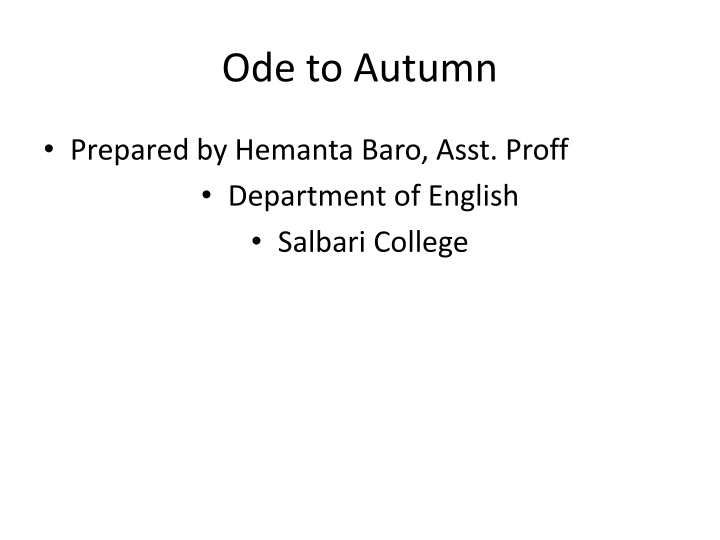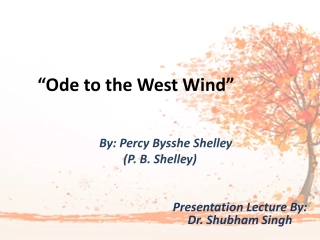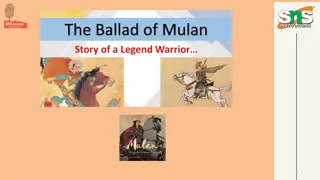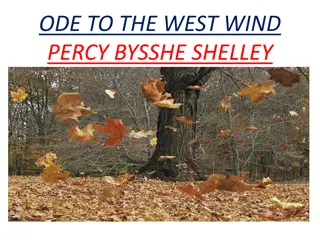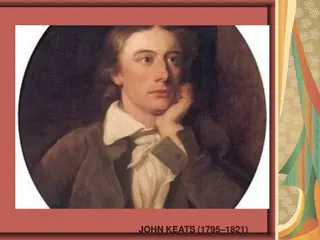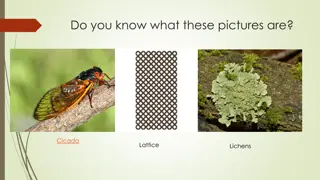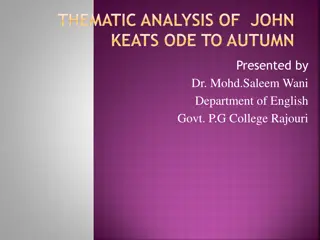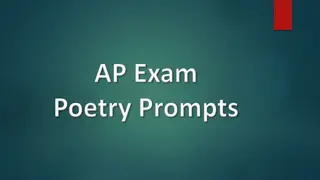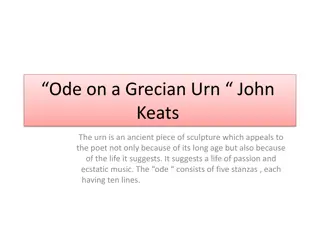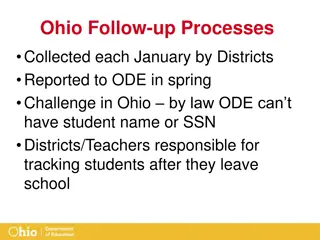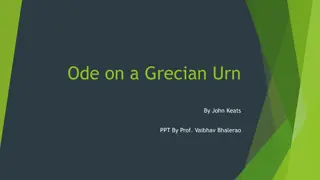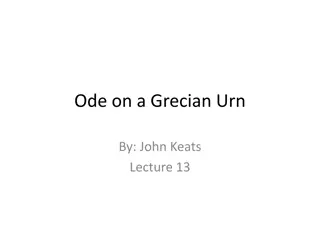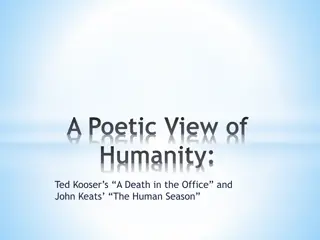Ode to Autumn by John Keats - Summary and Analysis
Ode to Autumn by John Keats is a captivating poem that beautifully captures the essence of the autumn season. The poem is divided into three eleven-line stanzas, each depicting the progression of autumn from the late maturation of crops to the approaching winter. Through rich imagery and personification, Keats portrays the beauty, sights, and sounds of autumn, appealing to the senses of sight and taste. The poet symbolically personifies Autumn as a woman involved in the various operations of the vintage. The final stanza portrays the wilful songs of the autumn season, signifying the transition to winter.
Download Presentation

Please find below an Image/Link to download the presentation.
The content on the website is provided AS IS for your information and personal use only. It may not be sold, licensed, or shared on other websites without obtaining consent from the author.If you encounter any issues during the download, it is possible that the publisher has removed the file from their server.
You are allowed to download the files provided on this website for personal or commercial use, subject to the condition that they are used lawfully. All files are the property of their respective owners.
The content on the website is provided AS IS for your information and personal use only. It may not be sold, licensed, or shared on other websites without obtaining consent from the author.
E N D
Presentation Transcript
Ode to Autumn Prepared by Hemanta Baro, Asst. Proff Department of English Salbari College
John Keats An English Romantic poet Main figure of the second generation of Romantic poets Considered as the last Romantic poet
Some important works Hyperion Ode on a Grecian Urn La Belle Dam Sans Merci To Autumn On Melancholy Ode to Psyche Lamia Ode to a Nightingale
Introduction Ode to Autumn is a poem written by John Keats, English Romantic poet It is the last work in a group of Keats poem written in 1819 Odes. On 11thSeptember 1819, Keats wrote a letter to John Hamilton Reynolds from Winchester describing the beauty of the season which got the form of Ode to Autumn .
Summary In the first stanza, the poet deals with the beauty and extravagance of Autumn season appealing to the senses of sight and taste. In the second stanza, Autumn the season is personified in women s shape which is present in the various operations of the vintage. In the last stanza, the poet presents the wilful songs of the Autumn season.
Some important points The poem has three eleven line stanzas wihich describe a maturation through the season, from the late maturation of the crops to the harvest and to the last days of autumn when winter is nearing. The imagery is rich achieved through the personification of Autumn, and the description of iys beauty, its sights and sounds
